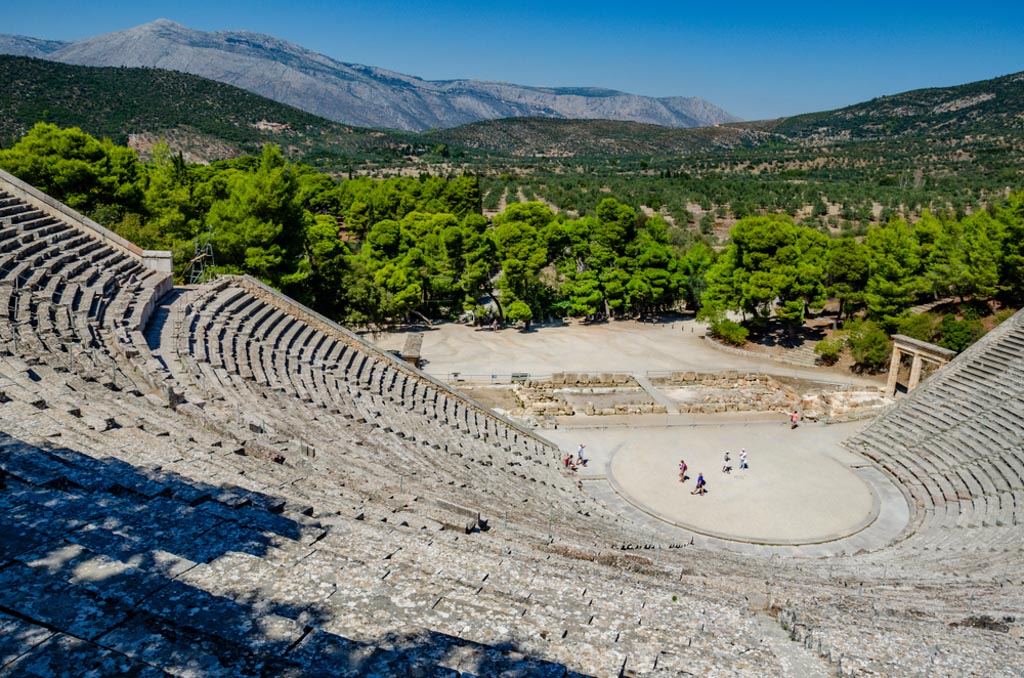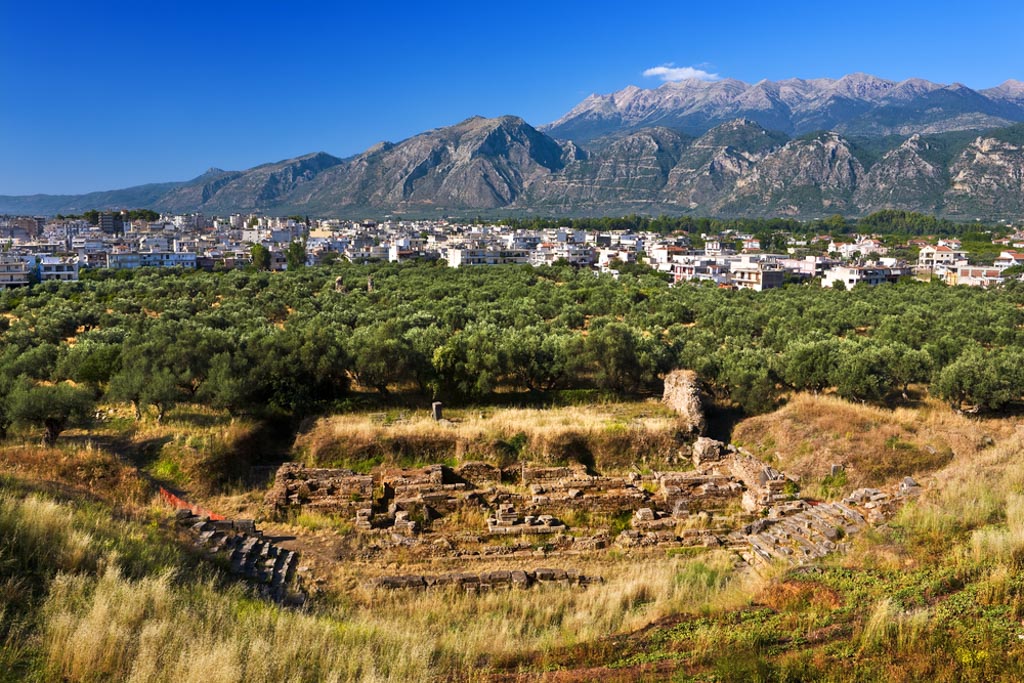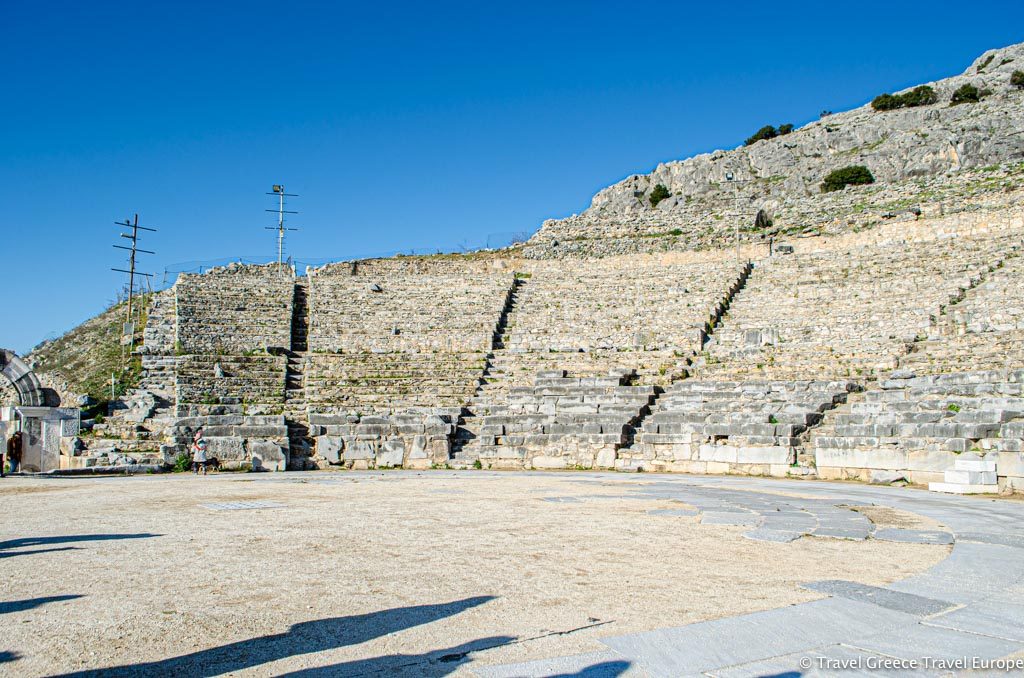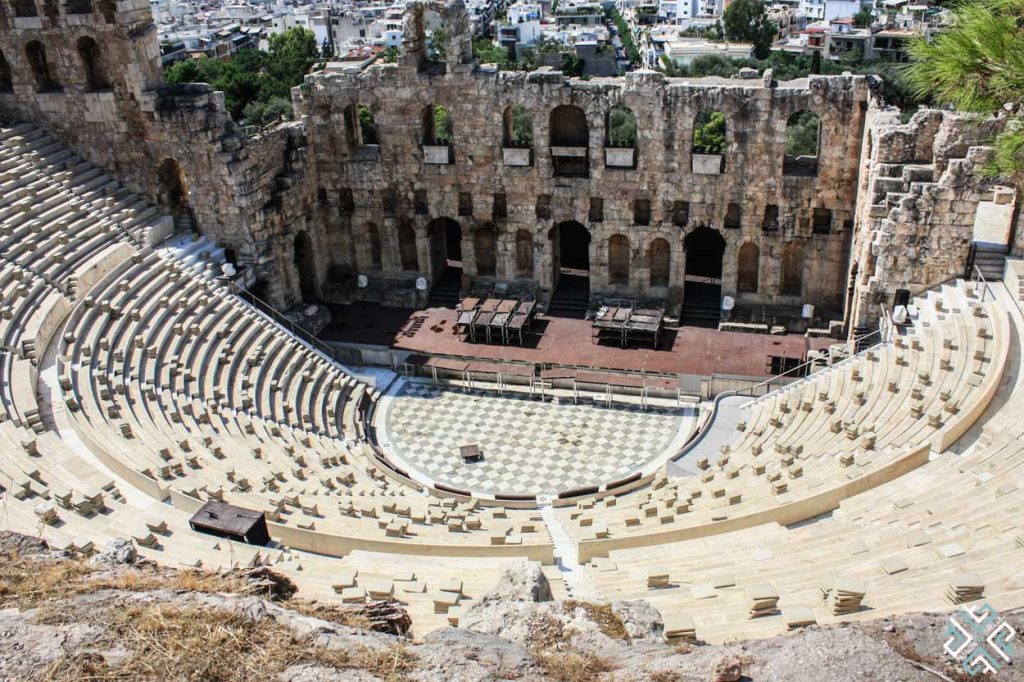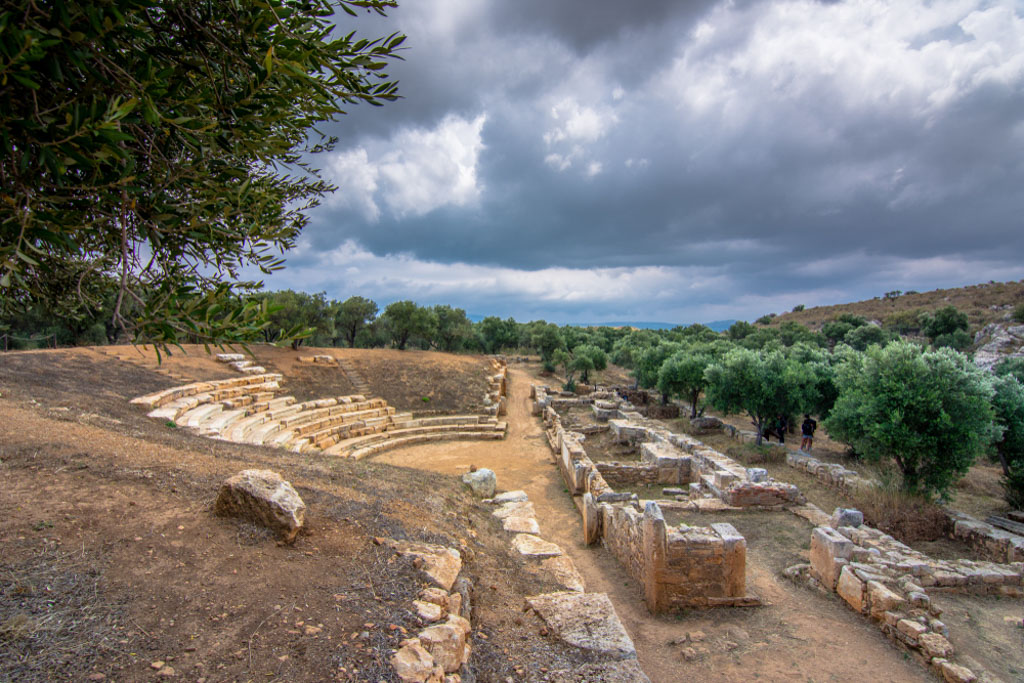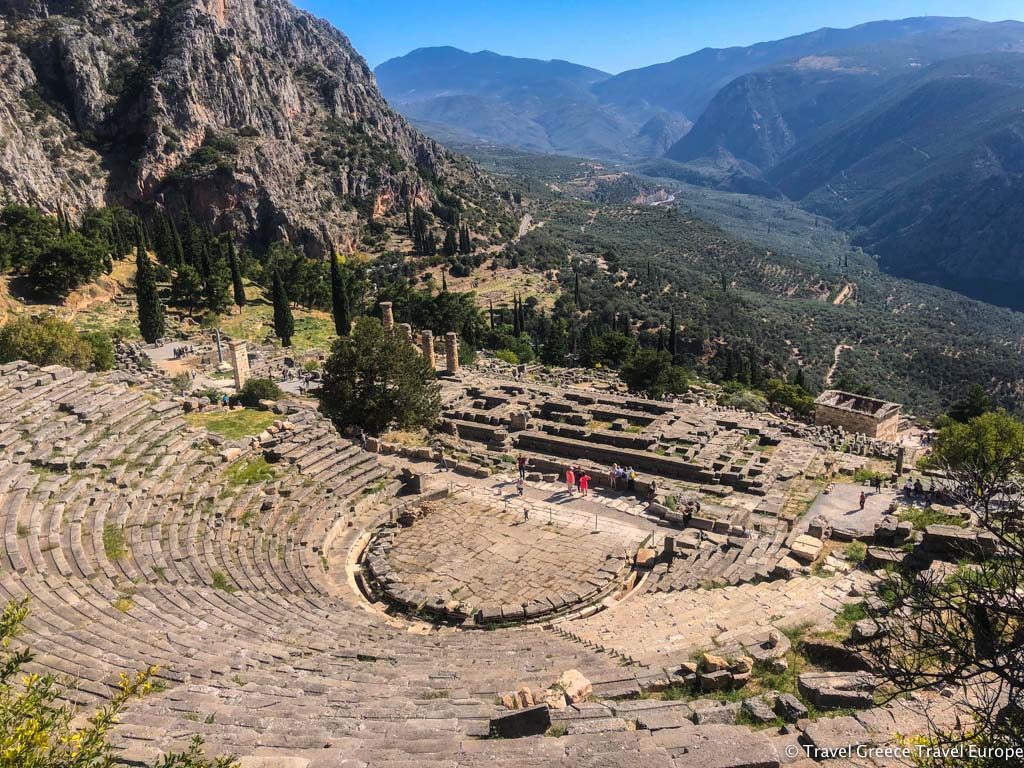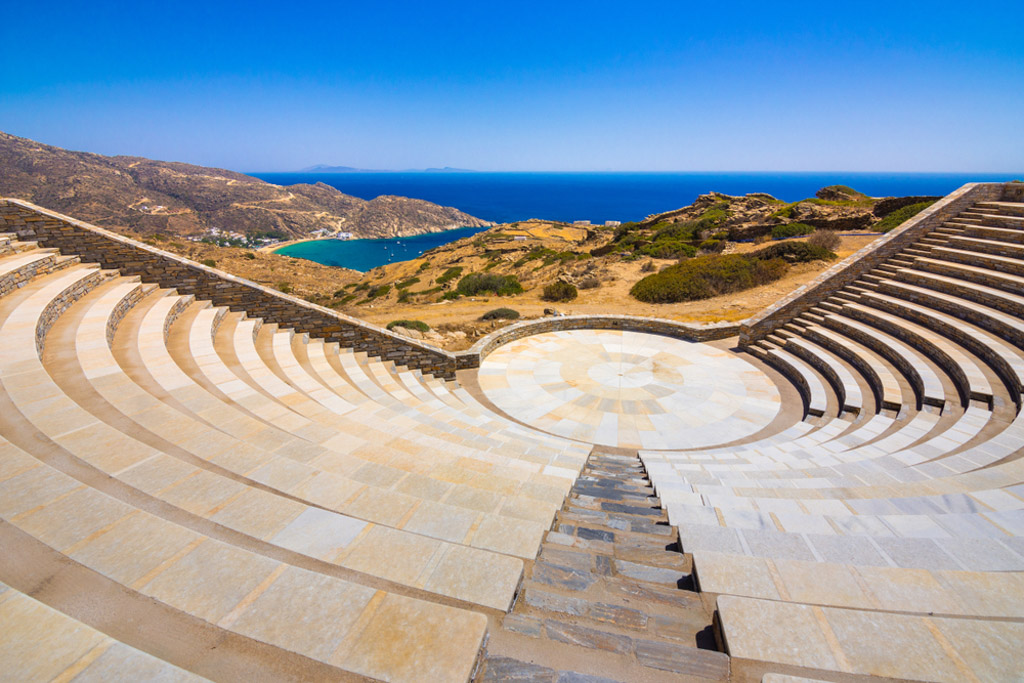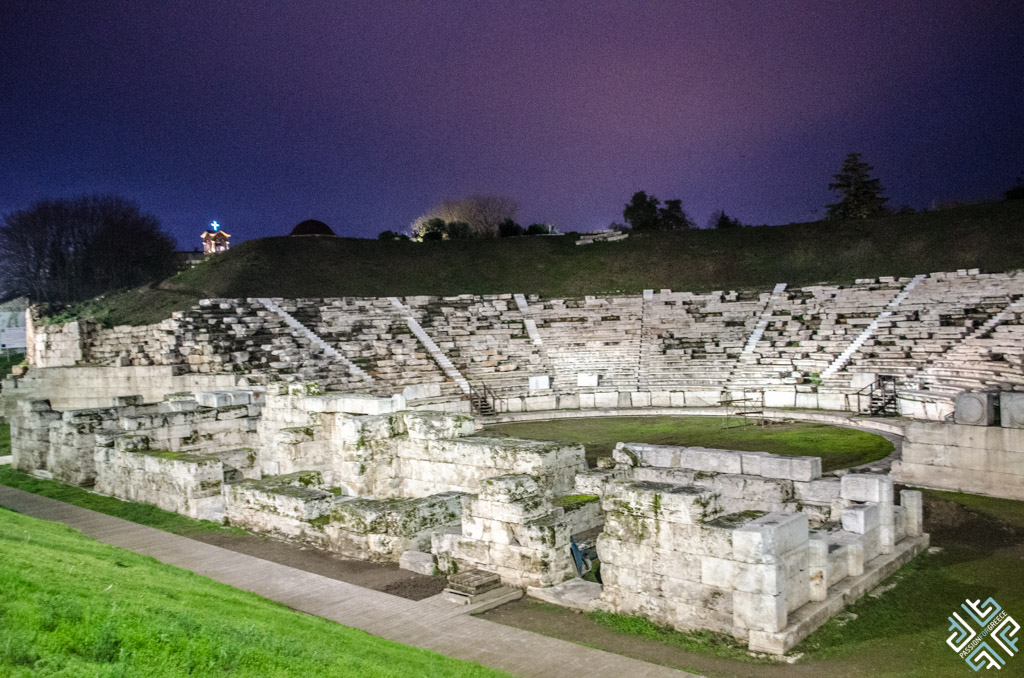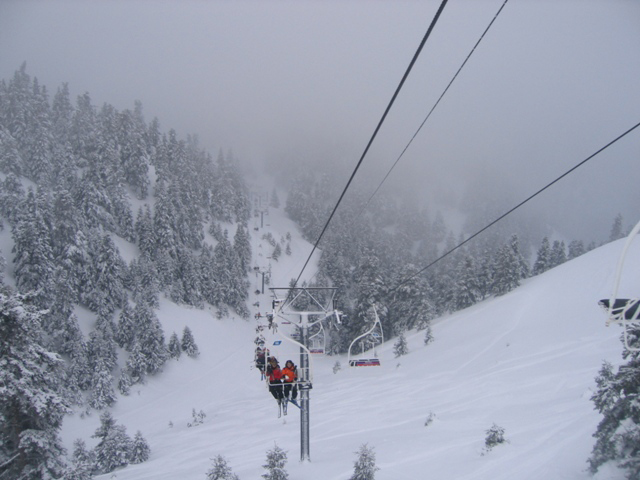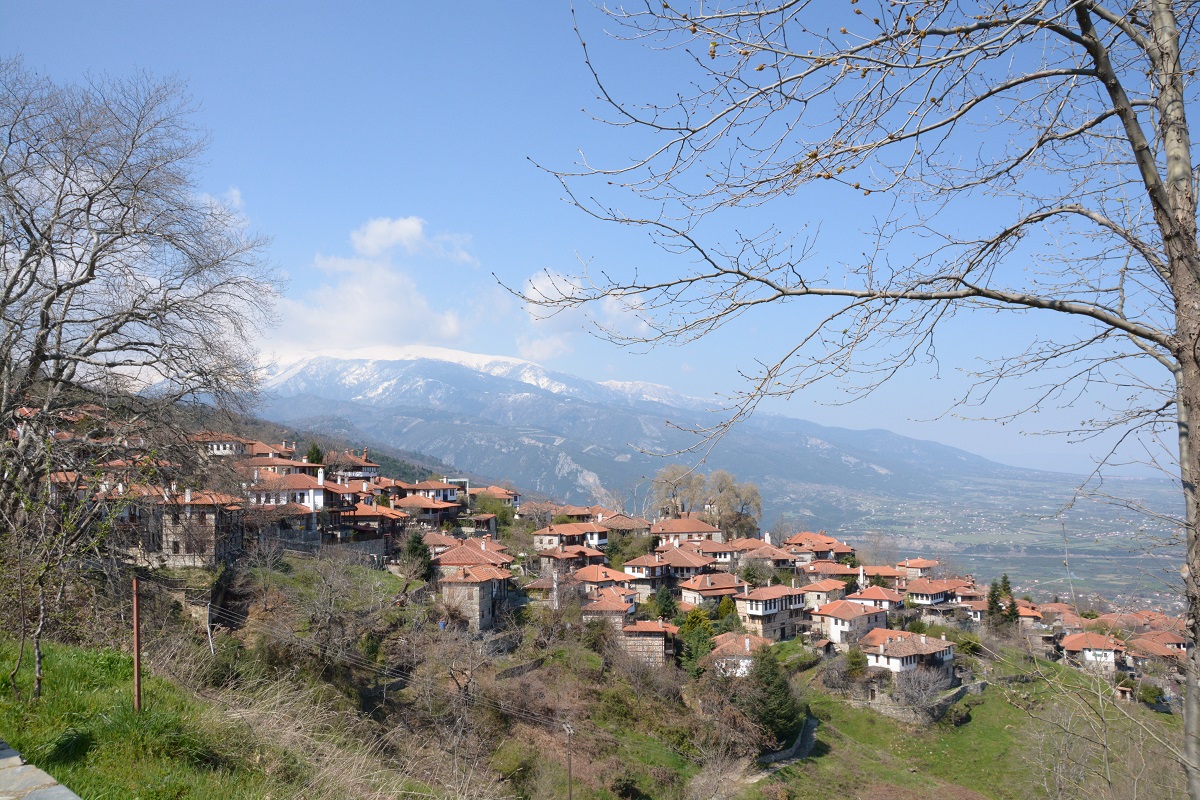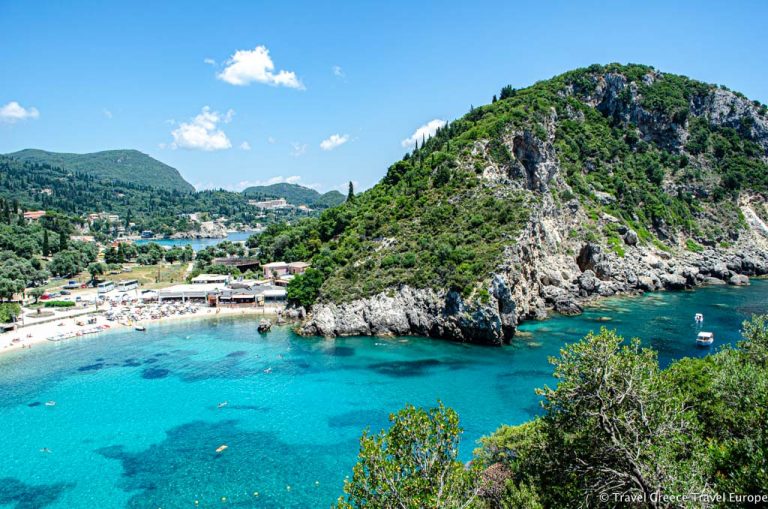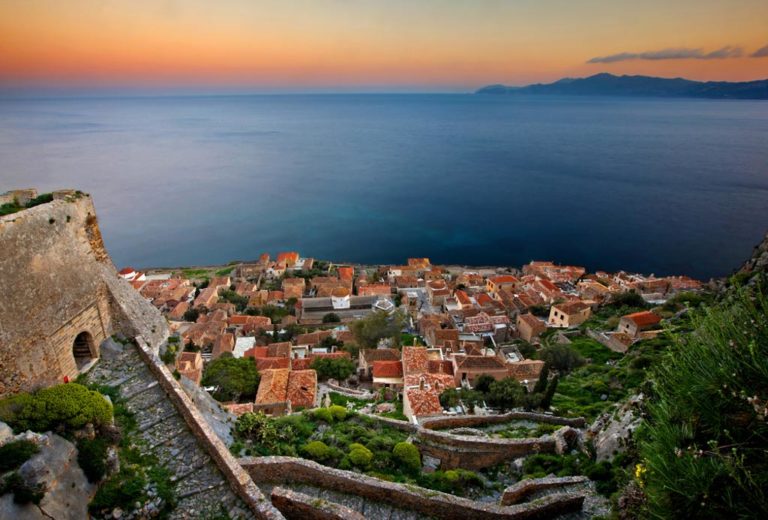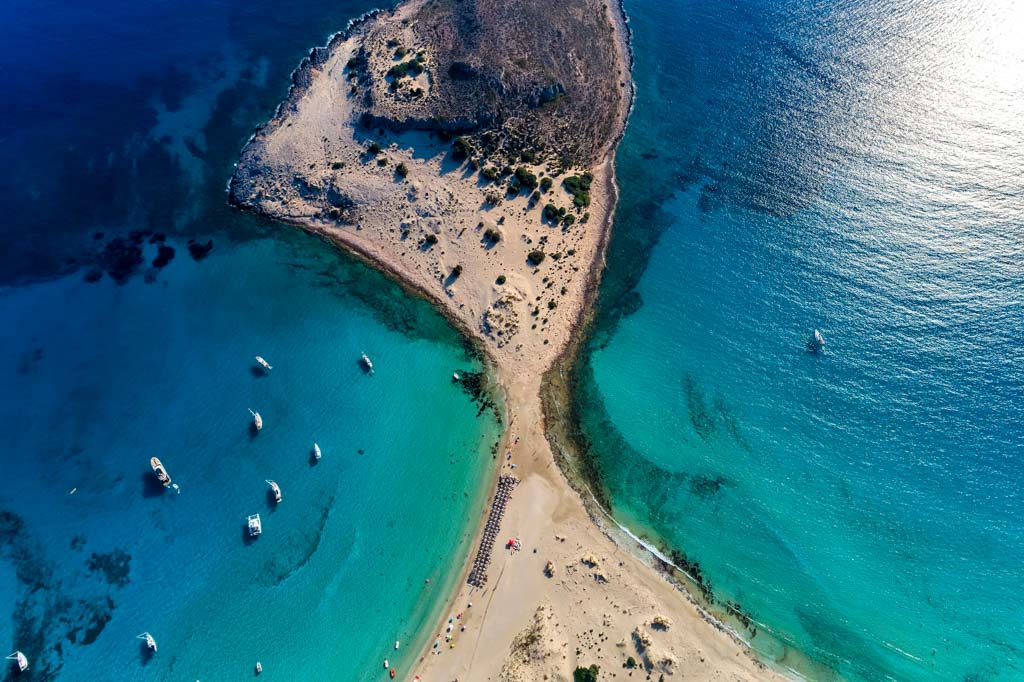Ancient Theaters of Greece
There are the remains of many ancient Roman and Greek theaters found around the Mediterranean. The ancient theaters of Greece were large, open-air structures and most of them were built on the slopes of hills.
Some of them were enormous and could hold more than 18 000 spectators. The way they were built, in that semi-circular system, meant that everyone got a splendid view. The performance-space was known as the orchestra and was a semi-circular space.
Ancient Theaters of Greece memorials of the departed
Many times, these ancient theaters of Greece were used to honor different gods while some of them were even built in memory of a wife or husband who had passed on. The Odeon of Herodes Atticus was built in 161 AD by Herodes Atticus to honor his wife’s memory. It was used for plays and music concerts, with most being either a comedy or a tragedy.
The Greeks used a number of special effects such as rain, thunder and horses hooves to enhance their plays.
Plays have always been part of Greek culture
A fascinating aspect is that almost every Greek city had a theatre and this is because plays were part of the many religious festivals that were held.
Not only that, just as it is today, the Greeks have always loved dancing and singing. At first, theaters were only used for festivals. Another interesting fact was that the actors at these theaters were always men. They wore masks with a mouth hole to ensure the voices of the actors weren’t muffled.
We take a look at some of the ancient theaters of Greece –
Ancient Messene
This amazing theater is beautifully located on the peninsula of the Peloponnese. In fact, ancient Messene is a major historical and archaeological site that has been well preserved. The Theater of ancient Messene wasn’t only used for plays but it also functioned as a site of mass political meetings.
The theater is one of the largest theaters of antiquity with space for 10,000 spectators. Its final form comes from some repairs and renovations taking place around the middle of the 2nd century A.D.
It is believed that the theater was used for religious festivals, wild animal fights and political gatherings. In the early 4th century AD the theatre was deserted and the stones used for new constructions.
Epidaurus
The Ancient Theater of Epidaurus was built in 340 BC on the west side of Cynortion Mountain. It seats some 3,000 spectators and is famous for its amazing acoustics. The theater, in the city of Epidaurus, was dedicated to the ancient Greek God of Medicine, Asclepius.
It is believed that this is the best-preserved and most beautiful theater in Greece with repairs being done soon after WWII. Since 1938, hundreds of theatrical plays have been performed, one of which is the annual Athens-Epidaurus Festival. Nowadays the theater of Epidaurus is still used to recapture ancient drama performances.
Dodoni
The ancient theaters of Greece have to include the well preserved Dodoni Theater located in Epirus. It is also one of the largest theaters, being able to seat 18 000 spectators.
The theater was constructed in the 3rd century B.C. by King Pyrros of Epirus. The theater has endured quite a few disasters and has had to undergo reconstruction. In fact, it was only in 1875 that the first excavations and restorations began. Today the theater still hosts performances during the Greek summer.
Ancient Sparta
The beautiful ancient theater in Acropolis of Sparta, built in the first century A.D. It is considered to be one of the biggest ancient theaters in Greece, with its 140-meter width.
The walls of the theater are made of white marble and it is estimated that it can seat 16 000 spectators. The theater didn’t have a permanent stage but a wooden, movable one carried on wheels. Later on a permanent stage of stone was constructed, dating back to the 1st century A.D.
Philippi
The city of Philippi was founded in 360 BC. Its theater is looked upon as one of the oldest and most important buildings of the city. The theater is found on the hillside of the Acropolis hill and in the 1st and second centuries AD it had a Roman form, and during the 2nd-3rd centuries AD, the theatre was converted into an arena.
A subterranean space was also introduced for the wild animals that would appear in the arena as well. By the 4th century AD, the theater no longer functioned as a performance area. Excavations started in 1921 and restoration work was carried out from 1994 to 2008. Also check out our post: Discover the wonders of Kavala
Athens – Odeon of Herodion, Dyonisus Theater
The Dionysos Theater, dedicated to Dionysus, the god of wine, seated some 17 000 spectators and was built in the 4th century BC. The theater, as well as the Odeon of Herodion, was built at the foot of the Athenian Acropolis.
The idea was to enlarge their previous theater in which the plays of renowned dramatists were first performed. The open-air theatre, Odeon of Herodes Atticus still hosts musical performances today. Also see our post: Greek Mythology tour of Athens
Delos
The Delos Theater was built around 314 BC, being completed 70 years later.The ancient theatre of Delos was completely built in marble. The seating capacity was for approximately 6,500 spectators.
Excavation of the Theater was undertaken in 1882. After 2000 years, the ancient theatre on the island of Delos will open again to a small audience with the Central Archaeological Council approving a project for its restoration.
Ancient Theater of Aptea – Crete
The Theatre of Aptera, built of limestone, is found at the Paliokastro site, in Suda Municipality, Chania. Building of the theater was done in two phases and with the characteristic layout of Hellenistic theatres – cavea, orchestra and stage building.
Excavation of the monument began in July 2008. The archaeological site is open to the public and attracts many visitors for modern stage performances.
Ancient Theater of Delphi
The ancient theatre of Delphi is situated within the Temple of the Pythian Apollo. The theater has been built on the same hill as the Temple of Apollo. It dates back to the 4th century B.C, having been built with limestone from Mount Parnassus.
Its 35 rows could seat 5 000 people. The theater has also undergone reformations, all the while keeping its basic structure. Today it still hosts plays and other cultural events.
Ancient Theater Ios
Ancient theaters of Greece are sometimes named after famous people and the Odysseas Elytis Amphitheatre in Ios, Cyclades was named after the famous Greek Nobelist poet Odysseas Elytis.
The theater is found at the top of the hill of Chora in Ios. The amphitheater is made of marble and can hold up to 1100 people at any given time. Today, cultural events of the island are held at the theater.
Ancient Theater of Larissa
This splendid theater was built at the southern foot of the Frourio hill, starting from the early 3rd century BC. Apart from theatrical performances, it was also used for open-air meetings and could seat 10.000 people.
The marble theater is thought to have connections to the worship of Dionysus, the ancient Greek god of wine, grape harvesting, fertility and theater. Vandalism has occurred but restoration work has begun and will be completed during 2022. Check out this post on what to do in Larissa: 10 Reasons to visit Larissa: Museums, Day Trips and Natural Beauty
Summary
Greece is an island holiday destination that has it all. It can guarantee something for everyone to enjoy. Among the must-visit attractions are the ancient theaters of Greece, giving one an idea of the glorious days of entertainment from the past.


